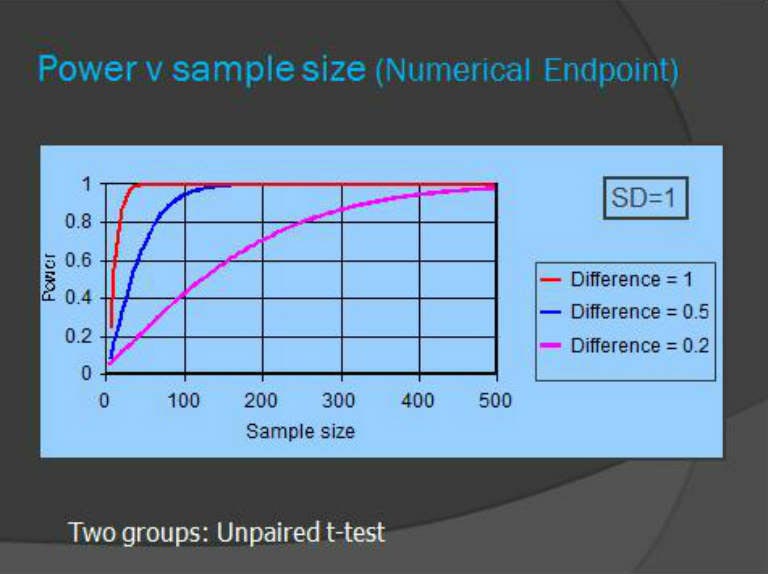Power calculation
Steve Roberts, Centre for Biostatistics.
What are power and sample size calculations?
Choosing an appropriate size for an experimental study is one major component in the design of any research study. The study needs to be large enough to have an acceptable chance of answering the research question, but not larger than necessary.
For studies with explicit pre-specified hypotheses it is in principal possible to estimate the probability that a study of a given size will answer the question - the power of the study - and many reviewers, funders and ethics committees ask for such calculations.
Whilst power calculations can be helpful, they are not a panacea. The parameters required to estimate study power are rarely known with great precision. Any study design is a compromise between gaining information and practical constraints of time, availability of participants or samples and funding.
Power calculations become part of the iterative dialogue that leads to the eventual compromise study design, and consideration of the uncertainty of the assumptions and their impact contributes to understanding the robustness of the design. There is no right size for any given experiment.
Power calculations are often not appropriate – there may not be a simple hypothesis (eg in a prevalence study, or a pilot study), or for early stage work there may be no information one can use to base a power calculation on.
Once you have agreed your compromise you need to communicate your reasoning and justify your choice and power calculations are part (but only part) of this justification.

Resources
- PS: Power and Sample Size Calculation - Vanderbilt University
- Stats Direct
- R-bloggers
- NQuery Advisor
- Power and Sample Size Programs - University of California
People
Your friendly local statistician is the person to talk to. For complex designs you need to find a good statistical collaborator who understands your particular application.
PDF slides
Download PDF slides of the presentation 'What is power calculation?'
